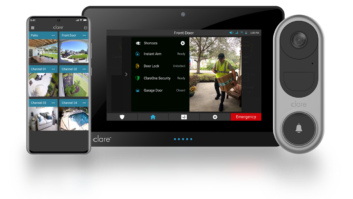
Of the 74 percent of online American adults who are likely to purchase health and fitness technology in the next 12 months, one in three (35 percent) plan to buy a smartwatch, according to the latest research from the Consumer Technology Association (CTA), formerly the Consumer Electronics Association (CEA). The study, Consumers Journey to Purchase: Health and Fitness, found that consumer intent-to-purchase is highest for smart watches, followed by fitness-related apps (30 percent), dedicated wearable fitness activity trackers (27 percent), smart apparel (27 percent) and devices that track sleep patterns (23 percent).
Led by the popularity of activity tracking devices, CTA’s U.S. Consumer Electronics Sales and Forecasts projects sales of health and fitness devices will reach $1.8 billion in revenue in 2015 (an 18 percent growth year-over-year), before increasing another 10 percent in 2016. Among online U.S. adults, consumer’s reported their top reason for buying a health and fitness device was to improve their health, followed by a recommendation from a friend, good reviews, and having the right features for their lifestyle.
“The Consumer Technology Association’s qualitative and quantitative research distinctly shows health and fitness devices help consumers feel they’re more successful in setting personal fitness and health goals and tracking progress, and that their lives are improved by these devices,” said Steve Koenig, senior director of market research, CTA. “Consumers’ planned purchases within this emerging category are emblematic of robust segmentation, as the industry strives to address multiple needs of ‘the quantified self.’”
While those who plan to purchase health and fitness devices primarily for health reasons share the same five most-desired device characteristics with those who plan to purchase a device primarily for fitness, the characteristics rank differently in importance. Among fitness users, 61 percent rank monitoring calories burned as the most important characteristic, followed by heart rate (52 percent), steps taken (42 percent), distance (34 percent) and blood pressure (23 percent). For health users, the most desired characteristics are monitoring heart rate (58 percent), calories burned (48 percent), blood pressure (47 percent), steps taken (28 percent) and distance traveled (21 percent).
A suggestion from a friend or family member (44 percent) is the primary influence for purchasing health and fitness technology, followed by online suggestions (17 percent), a medical professional (11 percent), a corporate wellness program (four percent) and a salesperson in-store (four percent).
Health and Fitness Data Privacy
Qualitative findings from CTA’s study suggest consumers are open to sharing their fitness data with friends/family or their physicians, but are most comfortable with sending their health data to their doctors.
• Consumers are most comfortable sending health data to their physician. They already share almost all of their health information with medical professionals.
• Consumers believe that there is opportunity for sharing data with physicians. But consumers fear data security/data breach issues when sharing health statistics that involve personal health information.
• Consumers see potential in how data can be shared with physicians to track health. Consumers understand the value of data collected and tracked over a period of time, and believe they can act upon their health statistics effectively by giving access to their physicians.
In recognition of consumers’ desire for more privacy in an ever more connected world, CTA and its members created the Guiding Principles on the Privacy and Security of Personal Wellness Data – a first-of-its-kind set of voluntary guidelines for private sector organizations that handle personal wellness data. The Privacy Principles represent consensus among CTA members on how companies should address tangible privacy risks and consumer preferences.
“The potential of securely harnessing valuable health data will have a transformative impact on our lives – from the ability to identify early-onset diseases, offer preventive health benefits, assist in managing chronic conditions and provide more effective remote care of your loved ones,” said Shawn DuBravac, Ph.D., chief economist and senior director of research, CTA. “Consumers see the potential for benefits from sharing health and fitness data with friends, family and medical professionals and they expect privacy to be balanced with those benefits.”






